The Milky Way is a spectacular sight stretching across the night sky like a river of stars. However, many people wonder if seeing the Milky Way during a full moon is possible.
The answer is not a simple yes or no. When the moon is full, its bright light can wash out the stars and make it difficult to see the Milky Way. However, it’s not impossible to see the Milky Way during a full moon. Some photographers prefer to shoot the Milky Way during a full moon because the moonlight can add an exciting element to their photos.
In a nutshell: If you’re hoping to see the Milky Way during a full moon, you can do a few things to increase your chances.
- Find a location with minimal light pollution. This will help you see more stars, even during a full moon.
- Wait for the moon to set or rise later in the night when it’s not as bright.
- Consider using a red flashlight or night vision goggles to help preserve your night vision.
In this article, you get
A deep dive into the factors that affect Milky Way visibility
Tips on finding the best locations for stargazing and observing the Milky Way
Various techniques for viewing the Milky Way with Moon
Milky Way astrophotography tips, including post-processing tips
By the end of this article, you’ll have all the info to see the Milky Way during a Full Moon and much more.
Let’s dive right in.
Recommended For You
Can You See Milky Way With Full Moon: Overview
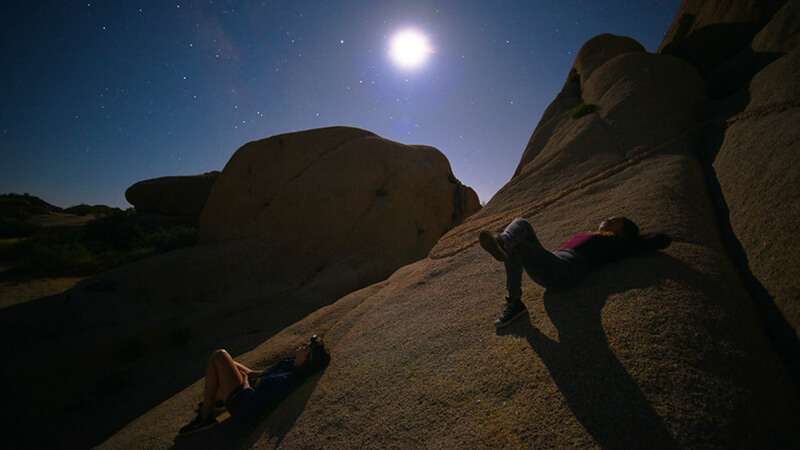
If you’re an amateur astronomer, you may wonder if you can still see the Milky Way with a full moon. The answer is yes, but it will be more challenging than on a moonless night.
During a full moon, its brightness can make it difficult to see the fainter stars and the Milky Way. However, you can still see the brightest stars and some parts of the Milky Way.
One way to increase your chances of seeing the Milky Way during a full moon is to find a location with minimal light pollution. The darker the skies, the easier it will be to see the stars and the Milky Way.
Another way to improve your chances of seeing the Milky Way during a full moon is to wait for the moon to set. When the moon is below the horizon, the sky will be darker, making it easier to see the stars and the Milky Way.
While seeing the Milky Way during a full moon may be more challenging, it’s still possible with the right conditions and patience.
Ever wonder if all the stars you see are in the Milky Way galaxy?
FREE STARGAZING CHECKLIST
My 5-page Stargazing Checklist will enhance your astronomical observations.
Follow this free checklist to navigate the night sky with confidence, clarity, and a sense of preparedness for a rewarding stargazing experience.

Milky Way Visibility Factors

Several factors can affect its visibility when it comes to seeing the Milky Way. Here are some things to consider:
Brightness of Milky Way
The brightness of the Milky Way can vary depending on the time of year and your location.
During the summer months, the Milky Way can be seen in the Northern Hemisphere, while in the winter months, it can be seen in the Southern Hemisphere.
The brightness of the Milky Way can also be affected by light pollution from nearby cities and towns.
Moonlight Intensity

The intensity of moonlight can have a significant impact on the visibility of the Milky Way.
A full moon can make it difficult to see the Milky Way, as its brightness can wash out the stars in the night sky. Even a partial moon can affect visibility, so it’s essential to check the moon phase and rise and set times before heading out to stargaze.
- Check the moon phase and rise/set times before heading out to stargaze
- Avoid stargazing during a full moon
- Look for opportunities to stargaze during a new moon or crescent moon phases
Weather Conditions
Weather conditions can also play a role in the visibility of the Milky Way.
Cloudy or hazy skies can make it difficult to see the stars, while clear skies can provide optimal viewing conditions.
It’s also important to consider the temperature and wind conditions, as extreme weather can make stargazing uncomfortable or even dangerous.
Sky Conditions
When it comes to seeing the Milky Way, sky conditions are crucial. The clearer the sky, the better your chances of seeing the Milky Way.
Before heading out to stargaze, check the weather forecast to ensure the sky is clear. Cloud cover is one of the most important factors to consider. If the sky is cloudy, it will be impossible to see the Milky Way.
Atmospheric conditions also play a role in visibility. Light pollution, humidity, and air pollution can all impact how well you can see the Milky Way.
- Light pollution: The more light pollution in the area, the harder it will be to see the Milky Way.
- Humidity: High humidity can create haze in the sky, making it harder to see stars.
- Air pollution: Pollution in the air can also create haze, making it harder to see stars.
Light Pollution
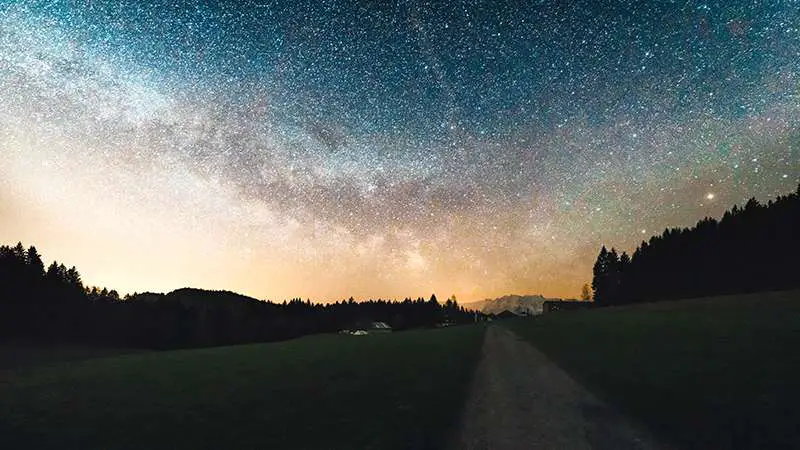
If you’ve ever tried to stargaze in a city, you’ve probably noticed that it’s much harder to see stars than in a rural area. This is because of light pollution, the excessive and misdirected artificial light that brightens the night sky, making it difficult to see stars, planets, and other celestial objects.
There are several types of light pollution, including skyglow, glare, and light trespass. Skyglow is the brightening of the night sky over populated areas, while glare is the bright, blinding light from poorly designed or placed lights. Light trespass is when light spills over into areas where it’s not wanted or needed.
Light pollution makes it harder to see stars and has adverse effects on wildlife, ecosystems, and human health. For example, it can disrupt the natural cycles of nocturnal animals and interfere with their navigation ability. It can also cause sleep disorders and other health problems in humans.
Fortunately, there are ways to minimize light pollution. One way is to use “dark-sky” lighting fixtures that direct light downward and shield it from spreading in all directions. Another way is to turn off lights when unnecessary or use motion sensors to turn them on only when someone is present.
- Types of Light Pollution:
- Skyglow
- Glare
- Light Trespass
- Effects of Light Pollution on Visibility:
- It makes it harder to see stars, planets, and other celestial objects
- Ways to Minimize Light Pollution:
- Use “dark-sky” lighting fixtures
- Turn off lights when they’re not needed
- Use motion sensors to turn lights on only when someone is present
By minimizing light pollution, we can improve our ability to see stars and other celestial objects and protect wildlife, ecosystems, and human health.
Impact of Moon Phases
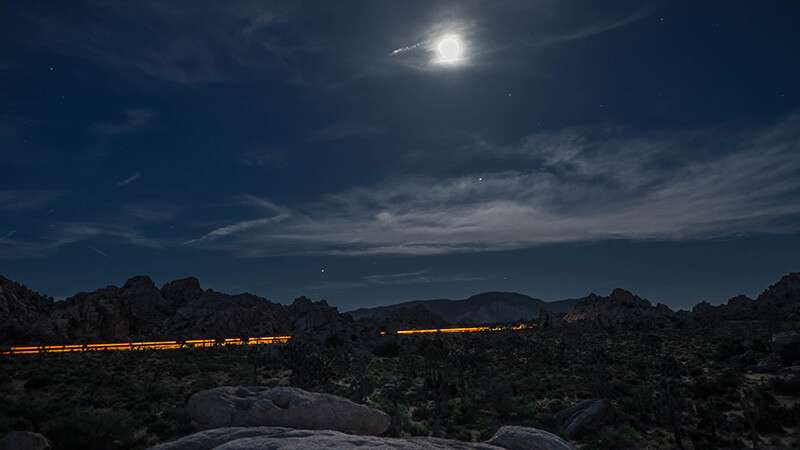
If you want to see the Milky Way in all its glory, you need to be aware of the impact of moon phases on visibility. The moon’s phase affects the amount of light in the sky, making it harder to see the stars and the Milky Way.
The moon is at its brightest during a full moon, and its light can wash out the stars and the Milky Way. This makes it difficult to see the Milky Way with the naked eye, even in dark sky locations.
However, if you are determined to see the Milky Way during a full moon, you can use a camera with a long exposure to capture the stars and the Milky Way.
On the other hand, the moon is at its darkest during a new moon, and there is very little moonlight to interfere with stargazing. This is the best time to see the Milky Way, as the sky is at its darkest, and the stars and the Milky Way are at their brightest.
The moon’s first quarter and last quarter phases are also good times for stargazing, as the moon is only partially illuminated, and its light is not as bright as during a full moon. However, the closer the moon is to full, the more it will interfere with stargazing.
If you are planning a stargazing trip, checking the lunar phase before you go is best.
You can use a lunar calendar or an app to determine when the moon will be the darkest. This will give you the best chance of seeing the Milky Way and other celestial objects.
- Best Moon Phases for Stargazing:
- New Moon
- First Quarter
- Last Quarter
- Worst Moon Phases for Stargazing:
Related Content
Read my article Can You See the Milky Way with a Half Moon?
Location and Time
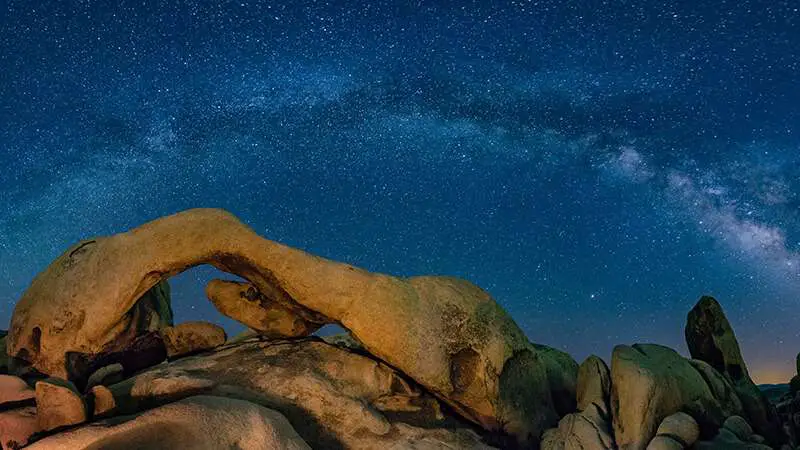
Location is critical to see the Milky Way during a full moon.
Finding a place away from light pollution is essential. Dark Sky Parks are great options for viewing the Milky Way. These parks are designated areas with minimal light pollution, perfect for stargazing. Some Dark Sky Parks even offer guided tours and educational programs.
Here are some recommended Dark Sky Parks:
Remote locations are also a good choice if you can’t reach a Dark Sky Park. Look for places far away from cities and towns, such as deserts or mountains. These areas typically have less light pollution and clearer skies. However, remember that remote locations may be difficult to access and require camping or hiking.
Here are some of the best stargazing location by US State:
- Arizona, especially Sedona
- California
- Colorado
- Florida
- Utah, especially Moab
- Hawaii: Kauai, Oahu, and Maui
If you live in an urban area, don’t despair. Urban observation is still possible with a little bit of planning. Look for parks or other open spaces away from streetlights.
You can also try observing from a rooftop or balcony. Just be sure to give your eyes time to adjust to the darkness.
- Look for Dark Sky Parks or remote locations with minimal light pollution.
- Consider camping or hiking to access remote areas.
- For urban observation, find parks or open spaces away from streetlights.
- Give your eyes time to adjust to the darkness.
- In the Northern Hemisphere, the best viewing times are during the summer months.
- In the Southern Hemisphere, the best viewing times are during winter.
The best time for stargazing is during the summer months in the Northern Hemisphere and winter months in the Southern Hemisphere. During these times, the Milky Way is visible for extended periods and is more prominent in the sky.
The time of the night is also essential. You can check the moonrise and moonset times to avoid nights with a bright full moon, which can wash out the Milky Way.
For a more in-depth look at visibility factors, read my article on the best stargazing conditions.
The following section will discuss the equipment you need to observe the Milky Way.
Milky Way Viewing Techniques
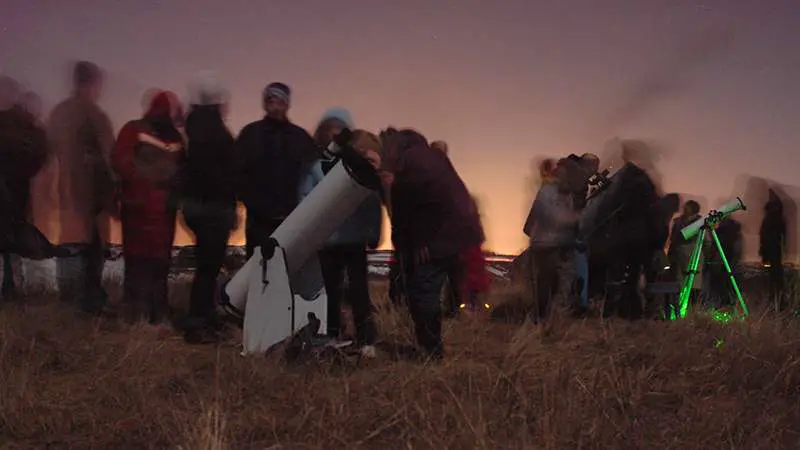
If you’re interested in viewing the Milky Way, there are several techniques you can use to get the best view possible. Here are some tips:
Naked Eye Viewing
The easiest way to view the Milky Way is with your naked eye. Look up at the sky and let your eyes adjust to the darkness. The Milky Way will appear as a faint, cloudy band stretching across the sky.
Find a location with little light pollution, and wait for a clear, moonless night.
Binocular Viewing
If you want to see more detail in the Milky Way, use binoculars.
Look for areas of the Milky Way that appear brighter or more distinct. Use a tripod or other stabilizing device to keep the binoculars steady.
Binoculars can help you see individual stars and other features of the Milky Way.
Telescope Viewing
If you’re interested in astrophotography or want to see even more detail in the Milky Way, try using a telescope. Use a long exposure to capture as much light as possible. Look for areas of the Milky Way that appear bright or have interesting features, such as star clusters or nebulas.
Photographing the Milky Way with a Full Moon
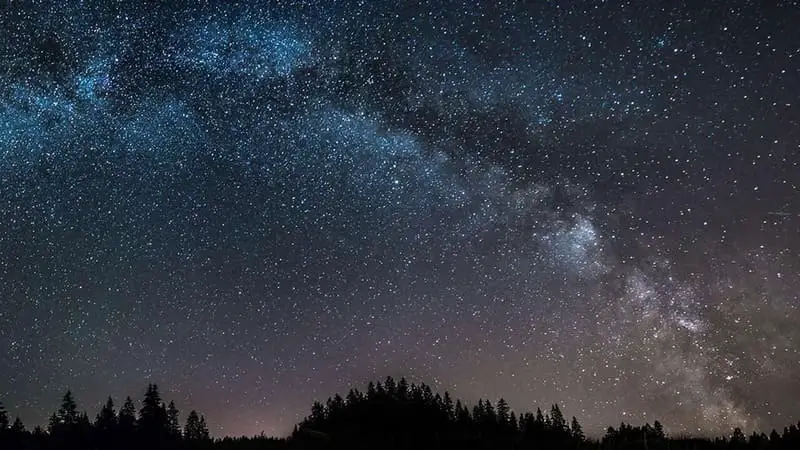
Equipment
When photographing the Milky Way, having the right equipment is essential. Here are some of the critical pieces of gear you will need:
- Camera: You will need a camera to control the shutter speed, aperture, and ISO. A DSLR or mirrorless camera is ideal, but even a high-end smartphone can work in a pinch.
- Lens: A wide-angle lens with a low aperture (f/2.8 or lower) is best for capturing the Milky Way. A 14-24mm or 16-35mm lens is a good choice.
- Tripod: A sturdy tripod is essential for keeping your camera steady during long exposures. Look for one that can support the weight of your camera and lens.
When setting up your gear, turn off any image stabilization or vibration reduction features on your lens or camera. These can introduce blur into your images when shooting on a tripod.
Consider bringing a flashlight to help you navigate in the dark. A red light is best, as it won’t disrupt your night vision like a white light. You can also use your flashlight to paint light onto foreground objects in your Milky Way photos.
Overall, having the right equipment is crucial for capturing stunning photos of the Milky Way. In the next section, I’ll cover some tips for getting the best possible shots.
Camera Settings

You must set your camera to manual mode to photograph the Milky Way with a full moon.
- Start by selecting your aperture to the widest possible setting, typically around f/2.8 or f/4.
- Next, set your ISO to a high value, such as 3200 or 6400.
- Finally, set your shutter speed to a value that will capture enough light without causing star trails.
Experiment with different shutter speeds until you find the right balance between exposure and sharpness.
Exposure Times
When photographing the Milky Way with a full moon, you’ll need to use shorter exposure times than you would with a new moon. This is because the moonlight will wash out the stars and make them appear less bright. Start with an exposure time of 15-20 seconds, and adjust as needed based on your camera’s sensitivity to light and the moon’s brightness.
Focusing Techniques
You’ll need to use manual focus to get sharp images of the Milky Way with a full moon. This is because autofocus can struggle to find a clear focal point in the dark.
One technique is to use live view mode to zoom in on a bright star and manually adjust the focus until it appears sharp.
Post-processing Tips
If you want to capture the Milky Way with a full moon out, you’ll need to do some post-processing work on your images.
Here are some tips to help you get the most out of your night sky photos:
- Use Image Editing Software: You’ll need to use image editing software such as Adobe Photoshop or Lightroom to get the best results. These programs allow you to adjust the exposure, contrast, and other settings to bring out your images’ details.
- Reduce Noise: When shooting in low light conditions, noise can be a problem. To reduce noise in your images, use a noise reduction tool in your image editing software. This will help to smooth out the graininess in your photos and make them look sharper.
- Correct Colors: Night sky photos often have a blue or green tint. Use the color correction tool in your image editing software to correct the colors in your images. This will help to bring out the true colors of the stars and other celestial objects in your photos.
- Adjust Exposure: When shooting the Milky Way with a full moon out, you’ll need to adjust the exposure settings on your camera. This will help balance the brightness of the moon with the night sky’s darkness. To do this, use the exposure compensation tool on your camera or manually adjust the shutter speed and aperture settings.
- Use a Tripod: When shooting at night, it’s essential to use a tripod to keep your camera steady. This will help eliminate blur and ensure your photos are sharp and clear.
Summary: Full Moon Milky Way
Thank you for reading my article on “Can You See Milky Way with Full Moon?”
The answer is yes but with certain caveats. The full moon’s brightness washes out the faint light of the Milky Way, making it challenging to see. However, that doesn’t mean you can’t enjoy the night sky during a full moon!
If you want to view the Milky Way, it’s best to plan your stargazing trip around a new or crescent moon when the night sky is at its darkest. This will give you the best chance of seeing the Milky Way’s details, like its galactic center.
Remember, the Milky Way is a band of stars and dust that stretches across the night sky. It’s not a single object, so you won’t be able to see it in its entirety in one glance. Instead, focus on one section of the Milky Way at a time.
- Plan your stargazing trip around a new or crescent moon.
- Focus on one section of the Milky Way at a time.
- Use a star chart or astronomy app to help you identify stars and constellations in the Milky Way.
The moon is a fascinating object to study, with its craters, mountains, and valleys. You can also observe the planets Jupiter, Mars, and Saturn, often visible during a full moon. While a full moon may not be the best time to view the Milky Way, it can still be an excellent opportunity to observe other celestial objects.
So, don’t let a full moon discourage you from stargazing.
There’s still plenty to see and explore in the night sky!
Read my other articles in my Milky Way series:
- Can You See the Milky Way with a Half Moon?
- How Many Solar Systems in the Milky Way?
- When is Milky Way Season?
- Why Does the Milky Way Look Cloudy?
- Are all the stars we see in the Milky Way?
- Does the Milky Way orbit anything?
- Are the constellations in the Milky Way?
- How are Milky Way pictures taken?
- Can you see the Milky Way on a cruise?
- Can I See the Milky Way with My Eyes?




